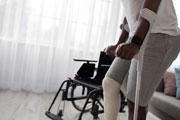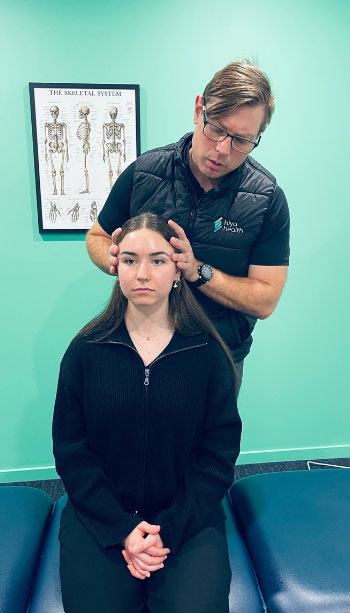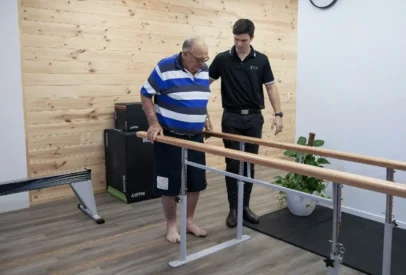What is Persistent Pelvic Pain & How Can Physiotherapy Help?
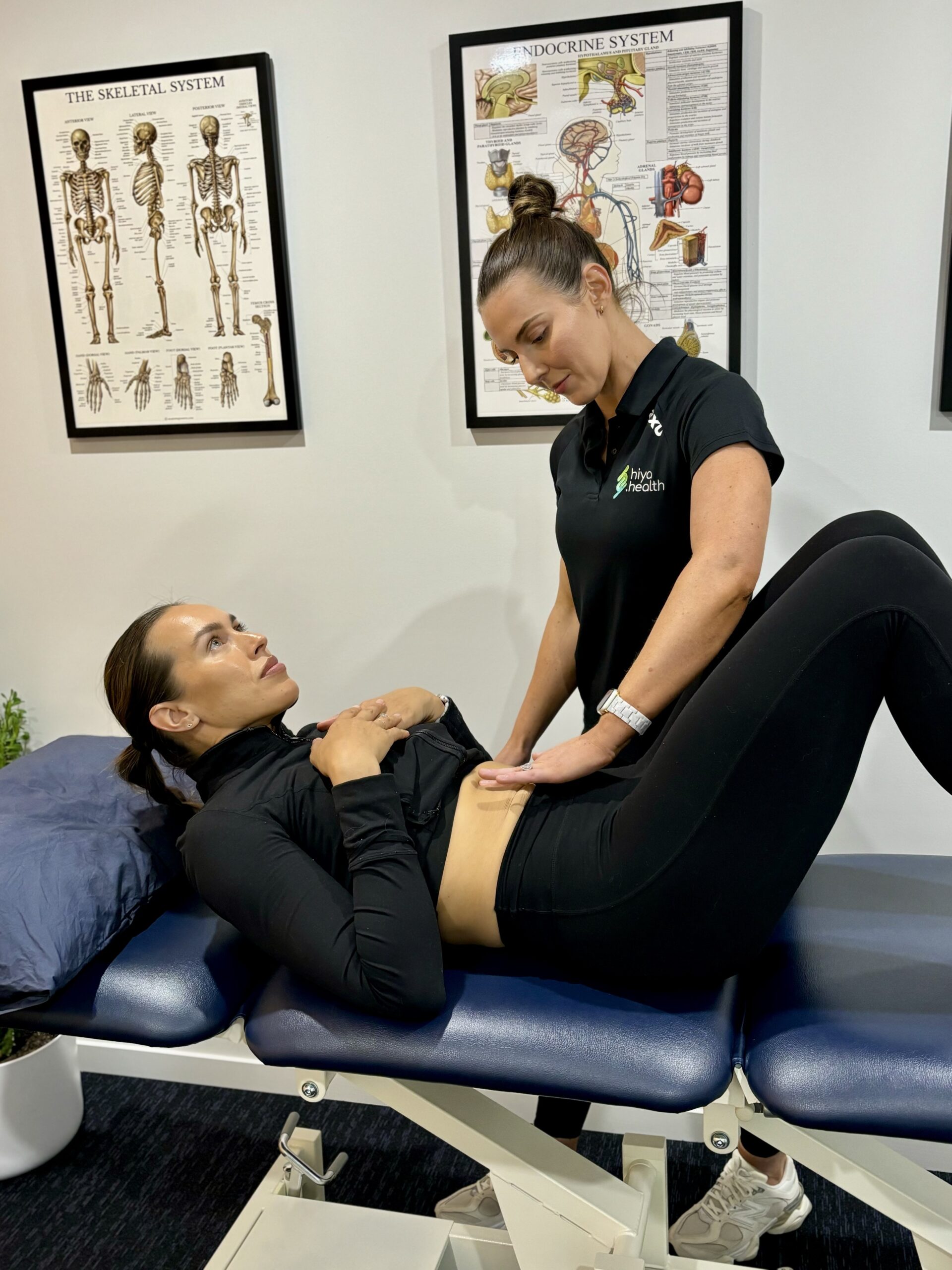
Persistent Pelvic Pain (PPP) is a condition defined by discomfort or pain in the pelvic region that persists for more than 6 months and affects approximately 15-25% of people who are born with female sex and reproductive organs and may be more common in younger women (Hailes, 2024).
The pelvic region includes the lower abdomen – the area below your belly button and between your hips. In people who are born with female sex and reproductive organs, this area encompasses your bladder, bowel, ovaries, uterus (womb) and fallopian tubes. In your pelvic region, there are also muscles and ligaments – such as your pelvic floor, abdominal wall and muscles around your hips, bottom and back.
Those with chronic pelvic pain describe their healthcare journey has long, frustrating and their pain is often dismissed. The experience of pain is real and can cause a reduction in physical function, impairing daily function, sleep, and have a negative impact on quality of life (Vincent & Evans, 2021)
Persistent Pelvic Pain is complex and can be caused by numerous factors, including psychological, social, and biological (physical health conditions), including but not limited to:
- Pelvic Floor Dysfunction
- The pelvic floor is a group of muscles that support your pelvic organs (bladder, bowel, and uterus). Dysfunction in these muscles can lead to pain.
- Musculoskeletal Issues
- Problems with joints, bones and/or muscles in the pelvic area and lower back can lead to persistent pelvic pain.
- Endometriosis
- A condition in approximately 1 in 9 females where the tissue similar to the lining of the uterus grows outside of it, often causing pelvic pain.
- Adenomyosis
- Similar to endometriosis, however, the tissue lining grows within the uterine wall often leading to painful periods and pelvic pain.
- Irritable Bowel Syndrome (IBS)
- A digestive disorder that can cause bloating, gas and abdominal pain that is often found in the pelvic region.
- Pelvic Inflammatory Disease (PID)
- An infection in reproductive organs can cause pain in the lower abdominal region.
- Interstitial Cystitis
- A chronic condition causing pressure and/or pain on the bladder.
How Physiotherapy can help
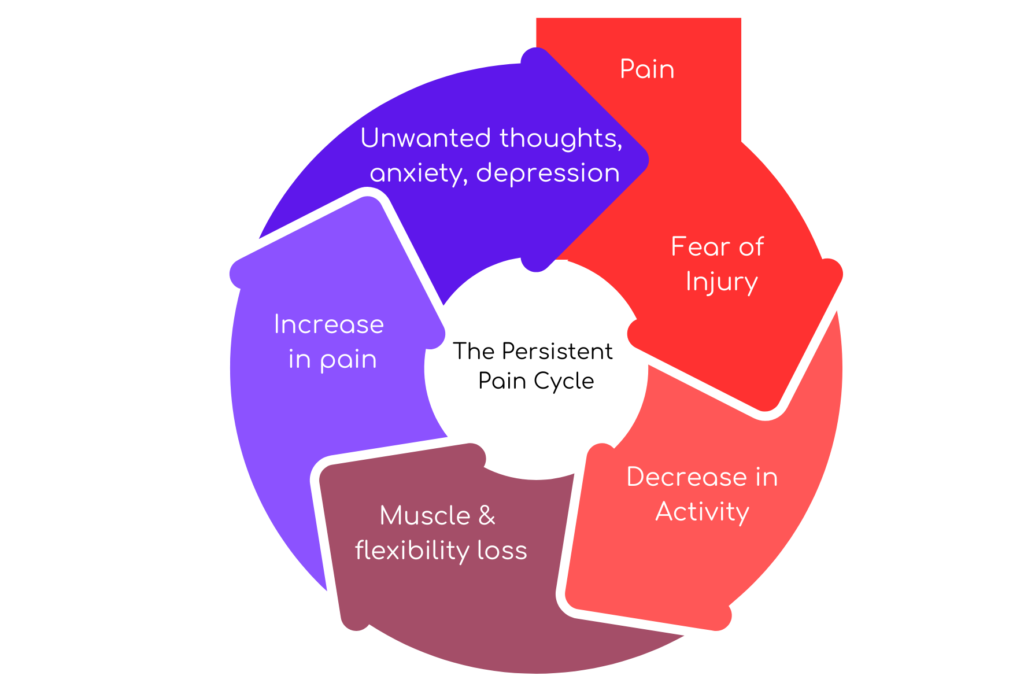
Due to the complexity of the condition, there is not one right way to treat it. That is why it is important for an individualised treatment approach, specific to YOU and your symptoms. Engaging in a multidisciplinary & holistic approach to Persistent (Chronic) Pelvic Pain is likely to be beneficial in treating symptoms (Vincent & Evans, 2021).
Seeking guidance from a Physiotherapist that specialises in pelvic health can assist with treatment specific to you.
Some strategies include, but aren’t limited to:
- Reduction of pain through evidence-based strategies
- Pelvic Floor Rehabilitation
- Manual Therapy Techniques
- Western Acupuncture/Dry Needling (Zheng et al., 2022)
- A home programme and strategies to continue to self-manage your condition
- Guided exercise and/or activity to assist with breaking the pain cycle (often when we are in pain, we limit our activity, which in turn can cause more pain)
Our unique approach
I have great success in the holistic management of Chronic Pain and Persistent Pelvic Pain and recognise that pain is complex, therefore requires management strategies that are specific to you, your symptoms, and your lifestyle. A combination of strategies involving exercise therapy, manual therapy (hands on) techniques, western acupuncture/dry needling and advice and education. I am enthusiastic about assisting you to live a great quality of life, working with you to reduce your pain and be able to do the things you want to do.
Tips & Self-Help Advice
Incorporating some lifestyle changes, including stress management, exercise, stretching, activity modifications, nutrition and sleep health are all important factors in managing our symptoms and pain.
For example, some relaxation and good sleep health strategies can help, such as:
- Deep breathing exercises
- Progressive muscle relaxation
- Using pillows under knees, hips or legs can assist with pain reduction and improve comfort
Why choose us?
With state-of-the-art facilities to provide specialist care, experience working with people who have pelvic pain conditions and encompassing a holistic approach to management that will benefit YOU and YOUR lifestyle, schedule an appointment with Jess Olorenshaw at Hiya Health Burleigh or one of our other experienced Physiotherapists!
Author: Jess Olorenshaw, Physiotherapist – Burleigh clinic
Book an appointment with a Physiotherapist
References
Hailes, J. (2024). “Persistent pelvic pain”: https://www.jeanhailes.org.au/health-a-z/persistent-pelvic-pain
Vincent, K. and Evans, E. (2021), An update on the management of chronic pelvic pain in women. Anaesthesia, 76: 96-107. https://doi.org/10.1111/anae.15421
Zheng, J., Lai, X., Zhu, W., Huang, Y., Chen, C., & Chen, J. (2022). Effects of Acupuncture Combined with Rehabilitation on Chronic Pelvic Pain Syndrome in Females: A Meta-Analysis Running Head-Acupuncture Combined with Rehabilitation on Chronic Pelvic Pain. Journal of healthcare engineering, 2022, 8770510. https://doi.org/10.1155/2022/8770510
Subscribe to e-news
Receive the latest health tips and news straight to your inbox












